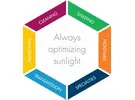 Every climate is different, and each crop has its own preferences. The wide range of ReduSystems coatings makes it possible to manage sunlight throughout the year.
Every climate is different, and each crop has its own preferences. The wide range of ReduSystems coatings makes it possible to manage sunlight throughout the year.
To ensure proper growth and production, you will sometimes need more or less light than is naturally available. Or the light may be welcome but not the accompanying heat. Or the light needs to be better distributed across the crop so that all the leaves can participate in the photosynthesis process. ReduSystems now offers solutions for all these requirements. In the past, a coating was synonymous with covering the greenhouse with chalk to protect the crop from excessive sunlight. The first step was to improve on this: ReduSol provides shade from some of the light and ensures that the rest is evenly distributed throughout the greenhouse. Having improved on the traditional chalk, the company continued to develop new solutions to achieve an optimal greenhouse climate in all seasons.
ReduSystems coatings can now be divided into six categories: shading light, diffusing light, influencing light colours, improving transmission, improving reflection and effective cleaning.
 Shading
Shading
ReduSol reflects part of the sunlight across the entire light spectrum. This significantly reduces light and heat stress. However, if the crop is mainly suffering from heat but can effectively convert the sunlight into production, then ReduHeat is a better choice.
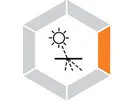 Diffusing
Diffusing
A diffuse coating ensures that the light is optimally distributed across the crop, with no more dark and light areas. This enables the crop to grow evenly and does not become stressed, resulting in better production and quality. ReduFuse is the product to use for this purpose. If heat also needs to be reflected, ReduFuse IR would be the best option.
 Specialties: influencing light colours
Specialties: influencing light colours
By adding pigments to the base coating, we can inhibit any light colour. For plants, the proportion of light colours is a signal for initiating certain processes, such as blooming, stem growth or branching. The first application in this line is ReduFlex Blue. This coating reflects part of the blue light which results in a longer rose stem. It also prevents product damage caused by excess UV light.
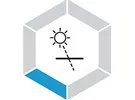 Improving light incidence
Improving light incidence
During a part of the year, there is more likely to be too little than too much light. Every bit of sunlight, to help boost production and improve product quality, is more than welcome. AntiReflect and AntiCondens can achieve this. AntiReflect reduces reflection on the greenhouse glass, allowing more sunlight to enter the greenhouse.
AntiCondens ensures that the condensation on the inside of the greenhouse cover is dispersed to form a fine water film. This water film lets the sunlight through, unlike condensation droplets that reduce the light.
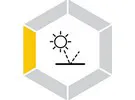 Reflection inside the greenhouse
Reflection inside the greenhouse
It is important that as much light as possible in the greenhouse reaches the crop. However, all dark rough surfaces absorb light. It is therefore useful to make everything as white as possible. PipePaint makes heating pipes reflective and protects them from corrosion.
 Cleaning
Cleaning
Clean glass increases light transmission. The GS-4 cleaning agent effectively removes all dirt without adversely affecting the glass. ReduClean can be used to remove ReduSystems coatings. This product causes the coating to dissolve, after which the rain washes it off the greenhouse cover for a spotless result.
For more information: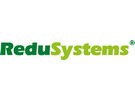 ReduSystems
ReduSystems
+31(0)13 507 53 99
sales@redusystems.com
www.redusystems.com
